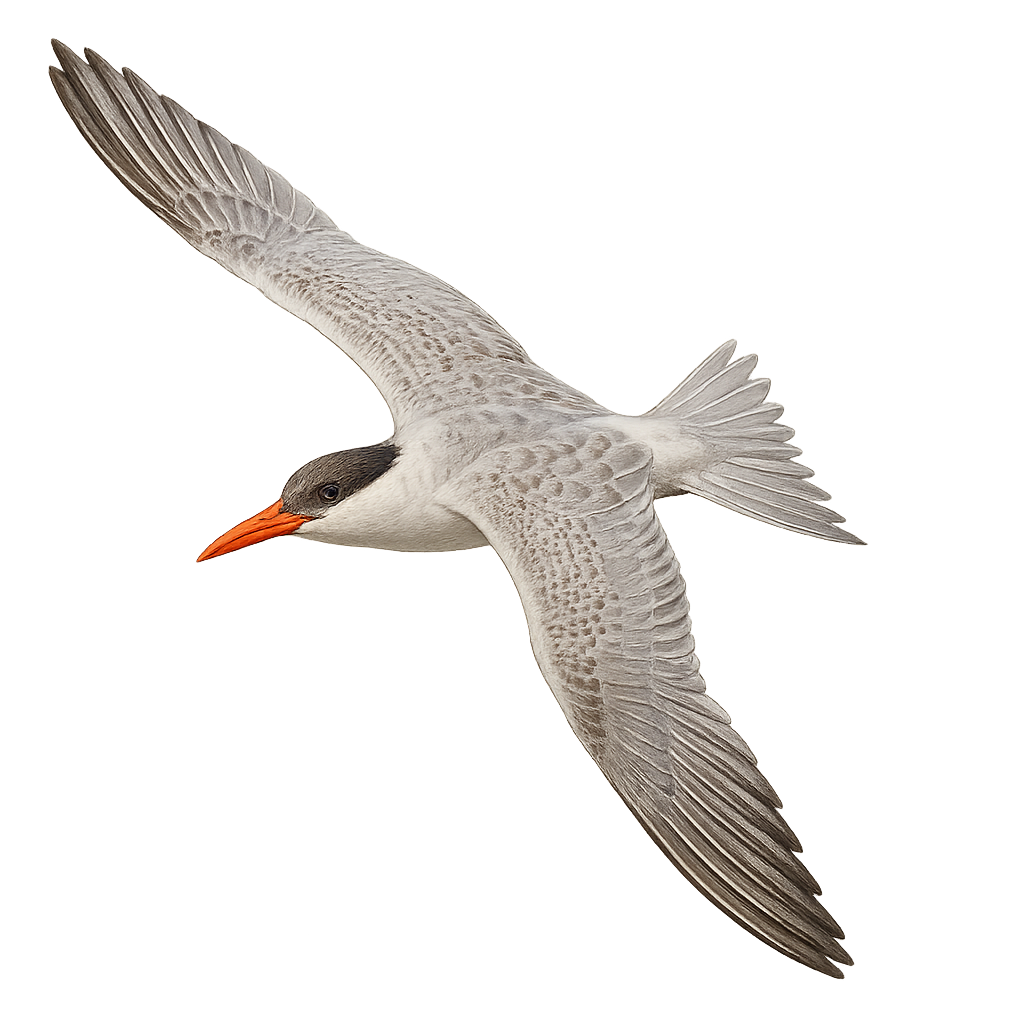Your wildlife photography guide.
Explore the caspian tern in detail, study its behavior, prepare your shots.
Where to observe and photograph the caspian tern in the wild
Learn where and when to spot the caspian tern in the wild, how to identify the species based on distinctive features, and what natural environments it inhabits. The WildlifePhotographer app offers tailored photography tips that reflect the caspian tern’s behavior, helping you capture better wildlife images. Explore the full species profile for key information including description, habitat, active periods, and approach techniques.
Caspian Tern
Scientific name: Hydroprogne caspia

IUCN Status: Least Concern
Family: LARIDAE
Group: Birds
Sensitivity to human approach: Suspicious
Minimum approach distance: 20 m
Courtship display: April to June
Incubation: 26-28 jours
Hatchings: May to July
Habitat:
Coasts, lakes, rivers
Activity period :
Primarily active during the day, with peak activity in the morning and late afternoon.
Identification and description:
The Caspian Tern, Hydroprogne caspia, is the largest tern species, easily identified by its bright red bill and black cap. It inhabits coasts, lakes, and rivers, feeding mainly on fish caught through agile diving. Its flight is strong and direct, often accompanied by harsh calls. It nests in colonies on islands or sandy beaches, typically laying two to three eggs. Although widespread, it is sensitive to human disturbance and habitat degradation. Its population is stable but remains vulnerable to environmental changes.
Recommended lens:
400mm – adjust based on distance, desired framing (portrait or habitat), and approach conditions.
Photography tips:
To photograph the Caspian Tern, choose early mornings or late afternoons for soft lighting. Use a telephoto lens of at least 400mm to capture details without disturbing the bird. Be patient and observe its flight patterns to anticipate movements. A tripod can be helpful for stabilizing your camera during long sessions. Finally, respect safety distances to avoid disturbing colonies, especially during nesting season.
The WildlifePhotographer App is coming soon!
Be the first to explore the best nature spots, track rutting seasons, log your observations, and observe more wildlife.
Already 1 432 wildlife lovers subscribed worldwide

